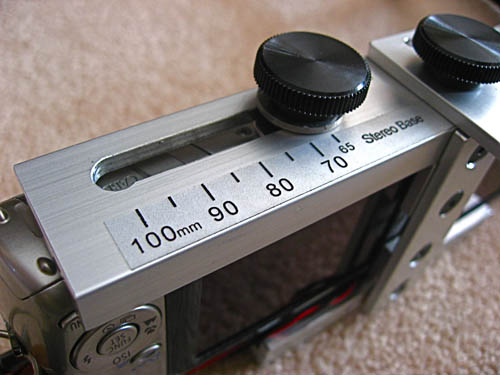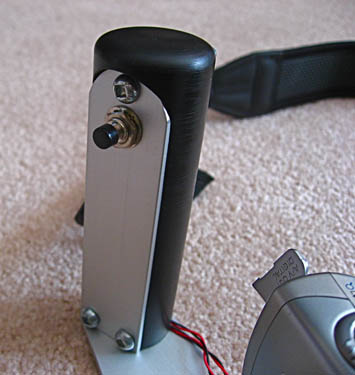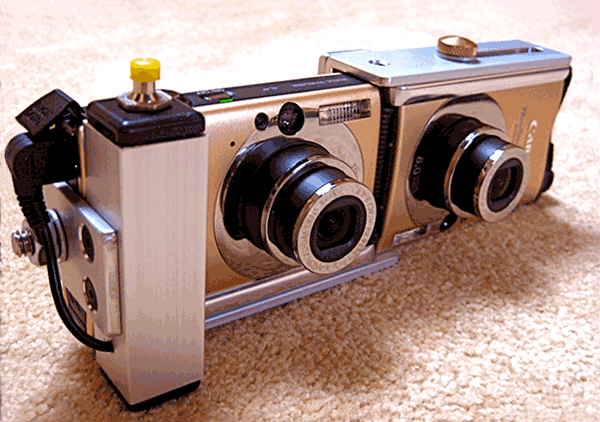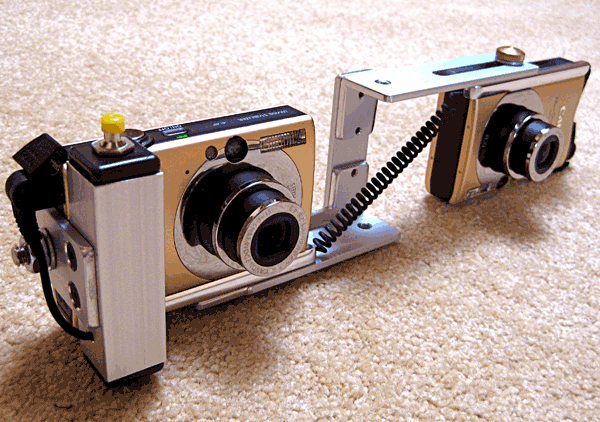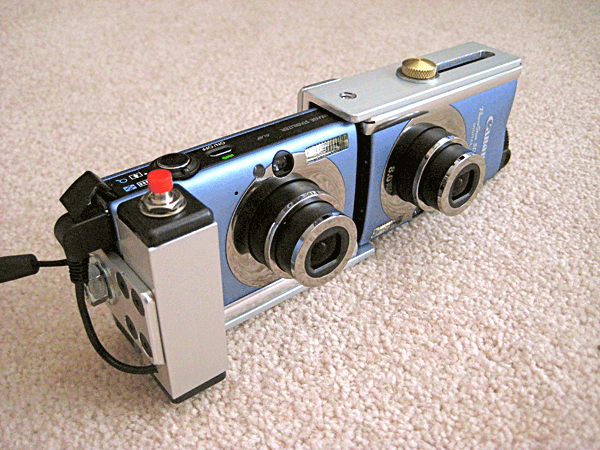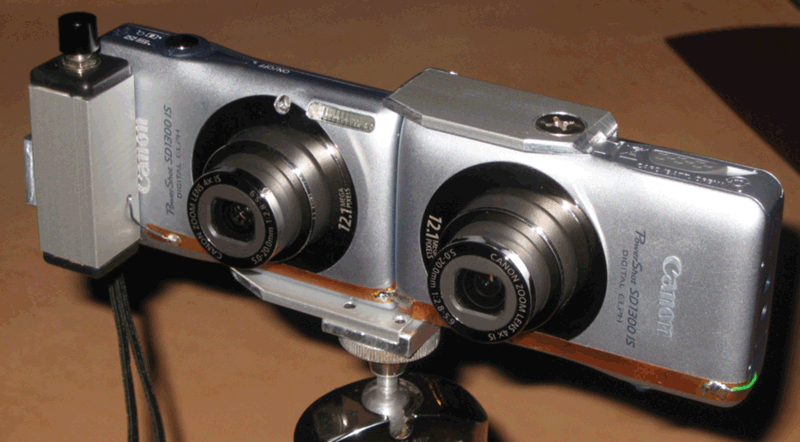Back View
It's hard to see but the stereo viewer is tilted 3 degrees to match the
small offset of the camera displays. This viewfinder is shown in it's
closest position. With this set up, the inside edges of the displays
are slightly vignetted, when the cameras are set to 65mm stereo base.
Moving the viewer to the outermost position, the entire display is
visable but the camera becomes "larger" to carry. You can find which
position is best for you and your particular shooting conditions. You
can also remove the viewfinder when you want the maximum convenience.
This viewfinder has also been modified with 2 diopter lenses,
to
allow those of us who need reading glasses to focus the review screens.
A great improvment, included at no extra charge.

This camera built from two Canon SD850 cameras.
They are synched by using a
camera software hack called
StereoDataMaker,
and wire connected through the USB ports. The synch is within an
average of one
3600th of a second. It comes with a removable stereo
viewfinder, similar
to the one on my
Olympus
camera. You will be able to do the same type of
hyper and hypo stereo that the
Olympus
camera can
do, plus this camera has a variable stereo base from 65mm to 99mm. It
has a superior shutter switch, and a scale for direct reading
of your
stereo base. This camera also has the exclusive feature of a
stereo
viewfinder,
which lets you set up and review your shots, in stereo.
This feature is not available yet, on any other custom stereo camera.
Chargers, Lithium Ion batteries and 2 GB memory cards are also
included. It is ready to shoot, straight out of the box. I will also
include an extra stereo viewer for viewing your stereo images.
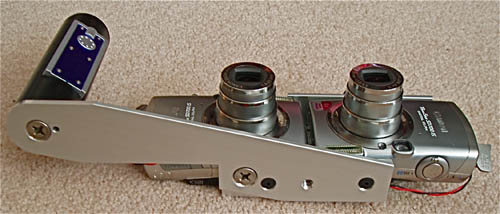
Bottom view of the Prototype (old switch style) showing access to
battery
and memory card door, and central tripod socket. This camera (unlike
most custom cameras) will sit flat on a table.
This
is not an insignificant feature!
Improvements
Direct reading scale, so you can set the stereo base from 65mm to 99mm.
Improved shutter release switch.
Inside the grip is a pair of AAA batteries in a standard holder. The
850s use 3 button cells in a custom holder). I am
not sure how often you will need to change them since I have not needed
to, thus far.

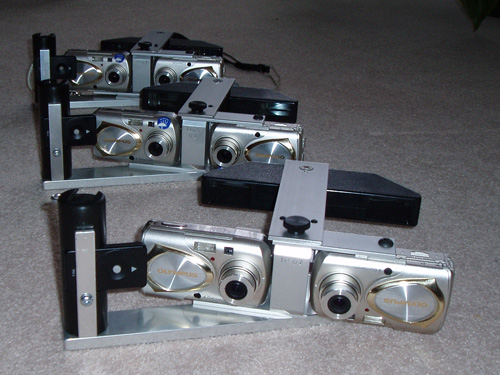 Here
is one of only two photos taken of the three Olympus stereo cameras I
made. This photo was taken just before two of them found homes around
the world. .
This is the left image of a stereo pair taken cha cha style. The moving
flash makes the pair a bit hard to view, so here is the 2D version.
Here
is one of only two photos taken of the three Olympus stereo cameras I
made. This photo was taken just before two of them found homes around
the world. .
This is the left image of a stereo pair taken cha cha style. The moving
flash makes the pair a bit hard to view, so here is the 2D version. Wire
synched cameras
Wire
synched cameras

